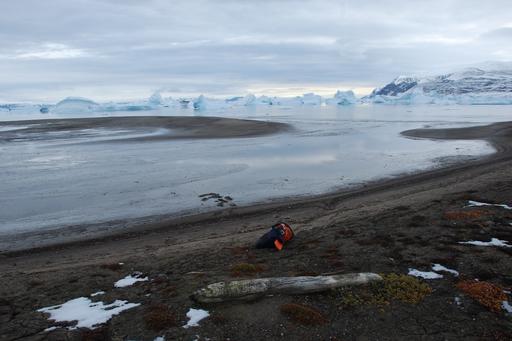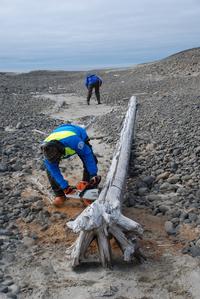
New insights into past Arctic climate variability from driftwood
Short description
The aim of the project is to utilise driftwood as a source of paleoclimate information to set the current Arctic climate change in a long-term context. Driftwood have been collected from beaches in Svalbard and Greenland. By applying wood-anatomical and dendrochronological methods, the driftwood is provenance and dated. Because the transportation of trees from the circumpolar continents to the Arctic requires sea ice, knowing the provenance of the trees and when they lived will give us information about sea ice conditions and ocean currents in the Arctic Ocean. This information provides opportunities to assess the role of past atmospheric conditions as drivers of variations in ocean currents and sea ice conditions, information that will be highly useful for predictions of the responses of the Arctic to warmer, ice free, conditions.
About the project
The aim of our project is to use tree-ring evidence from driftwood to reconstruct a detailed history of Holocene Arctic sea-ice cover and ocean currents. This information allowed us to infer past variability in atmospheric circulation (e.g., the Arctic Oscillation (AO) and the jet stream), and the impact of that variability on local, regional, and pan-Arctic climate regimes. This project will enhance our understanding of the sensitivity of the Arctic climate system, its forcings and feedbacks, and its role in northern hemisphere climate change.
Our main objective was to collect driftwood from northern Greenland during the Ryder 19 expedition with the Swedish icebreaker Oden, to add to our collection that was previously recovered from southern Greenland, Iceland, and Svalbard. Before being collected in Greenland, the driftwood originated as trees in pan-Arctic continents. These trees were washed into the sea, mostly by rivers, and frozen into sea ice. They were then transported by ocean currents around the Arctic Ocean, and eventually deposited on beaches. The tree rings of the collected samples were measured, which helped date the wood and determine its provenance. A precisely-dated driftwood sample, with known origin, indicates the presence of sea ice, because wood washed into an ice-free ocean will not drift long distances, nor for long amounts of time, before becoming water-logged, and then sinking. Wood samples entrapped in sea ice also provide information about the ocean currents (direction and strength) that transport the wood to distal locations. Finally, annual tree rings provide high-resolution climate information about the area where the trees grew.
Most of the driftwood in the Arctic, which is commonly found at or close to present shorelines, died less than 100 years ago, and show signs of logging. Older dritwood, from trees spanning the Holocene, can be found on elevated (raised) beeches or embedded in sediments above present sea level. Although driftwood have been used in several research projects, the potential of gaining climate information from their tree-ring data has large been overlooked. Indeed, until now, driftwoodhas mainly been used for dating purposes.

Interview with Professor Hans Linderholm about driftwood

